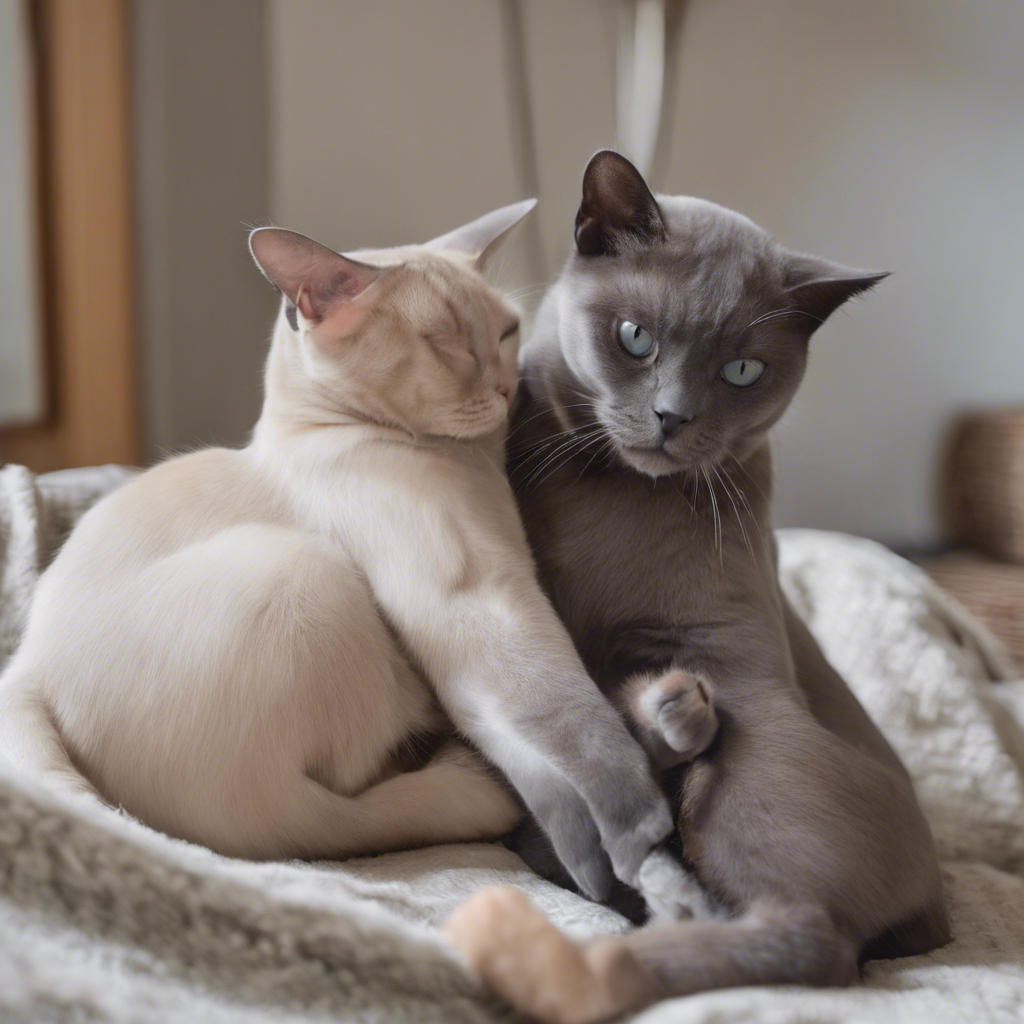Behaviour and socialisation of Burmese cats: A guide to their upbringing
The Burmese cat, a breed as mysterious and intriguing as the country of its presumed origin - Myanmar (formerly Burma) - is one of the most charming and interactive companions you could wish for. This article dives deep into the behaviour and socialisation of Burmese cats, providing fascinating facts and practical tips for training them.
The nature of the Burmese cat: a small leopard with a big heart
The Burmese cat stands out - not only because of its silky fur and striking, almost mesmerising eyes, but above all because of its extraordinary behaviour. It is a cat that loves its humans like there's no tomorrow. Her loyalty and affection are so strong that she is often compared to dogs. Well, who would have thought it?
- Sociability to the power of ten:** Burmese are considered the party animals among cats. They love to be the centre of attention and interact with people and other pets.
- **Play instinct:** Their playful nature makes them the perfect companion for children and adults alike. There's never a dull moment with a Burmese.

Socialisation of kittens: The key to happiness
The socialisation phase of a Burmese cat begins at kitten age. The foundations laid here will last a lifetime. The earlier, the better.
- Unfamiliar places and faces:** Gently familiarise your kitten with new surroundings and people. For example, make visiting the vet a little adventure. This way you can minimise stress in later years.
- Interesting toys:** Provide a varied range of toys that stimulate both physically and mentally.
The golden rule? Show patience. Every kitten is individual and develops at its own pace.
Training tips that work wonders
A widespread misconception is that cats cannot be trained. This is definitely not true of the Burmese cat. Their intelligence and desire to please make training not only possible, but also a lot of fun.
- **Clicker training:** A method that uses positive reinforcement. A click followed by a treat can work wonders for behaviour modification.
- Scratching post training:** To avoid scratching your furniture, introduce your cat to the scratching post. Reward her every time she uses the tree instead of the sofa.
Burner conversations: Communicating with your Burmese
One of the most fascinating characteristics of the Burmese is their ability to communicate. They literally hold conversations with their people. But beware: their communicative nature also means that a Burmese will make their opinion clear if something is not to their liking.
- **Understanding sounds:** Over time, you will learn to interpret your cat's different meows. Each has its own meaning, from I'm hungry to Play with me.
Social life: The Burmese in the cat community
Burmese cats generally get on well with other cats and other pets, provided they have been properly socialised. Confident interaction with other animals can be learnt and is important for your cat's mental health.
- **Slow introduction:** If you already have pets, introduce them slowly and under controlled conditions.
Conclusion: Building a lifelong friendship
The behaviour and socialisation of Burmese cats is a fascinating field. These cats are not just pets, they are true companions. Their loyalty, intelligence and kindness make them ideal family members. With patience, training and lots of love, you can be sure of a lifelong friendship with your Burmese.
Understanding the behaviour and socialisation of Burmese cats means taking a step into a world where animals and humans interact on a level of mutual respect and love. Take the leap and you will be rewarded with one of the most profound relationships you can experience.
FAQs
Are Burmese cats cuddly?
Are Burmese cats cuddly? Even though they love action, the people-loving Burmese are extremely cuddly. They confidently demand to be stroked.
Can you keep a Burmese cat alone?
Burmese cats are very intelligent and can learn to open doors, for example, which often makes them successful escape artists! Burmese cats do not like to be alone, so if you are not at home often, you should definitely get a second cat!
How old does a Burmese cat get?
The Burmese is actually very robust, but problems such as immune deficiencies, diseases and shorter life expectancy often occur due to strong inbreeding. The Burmese can actually live up to 17 years, but on average has a life expectancy of up to 12 years.
How much do Burmese cats shed?
Cats that don't shed: Burmese cat. Burmese cats have a particularly close-lying coat and therefore shed very little. These elegant house pets are considered wilful and alert, but are nevertheless very affectionate. Burmese cats have a close-fitting coat and therefore shed very little hair.
Author
-

David is a passionate aquarist with more than 20 years of experience in setting up and maintaining freshwater and saltwater aquariums. He specialises in the biodiversity of aquatic ecosystems, aquascaping and the species-appropriate keeping of aquarium fish. His articles on haustierewissen.de are a treasure trove for aquarium enthusiasts looking for sound advice and creative ideas for their underwater worlds.
View all posts




